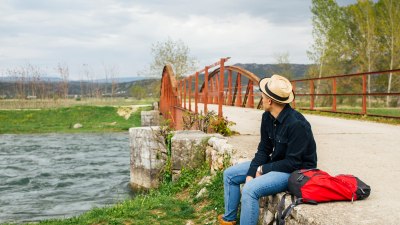The ‘Let’s Take a Shortcut’ Mistake – Why It Never Ends Well
How spontaneous detours turn into unexpected adventures—or total disasters

Every traveler, road-tripper, and hiker has had the same thought at some point: “Let’s take a shortcut!” It sounds like a great idea—saving time, avoiding traffic, or making an adventure out of the journey. But somehow, shortcuts always seem to go wrong. Whether it’s an overgrown trail, a blocked road, or a confusing alley that leads nowhere, the ‘shortcut’ often ends up being anything but short. Here’s why taking a shortcut rarely ends well—and how to avoid turning a minor detour into a major disaster.
The Illusion of Saving Time
Shortcuts are tempting because they promise to shave off minutes, but most of the time, they do the opposite. GPS might suggest an alternate route that looks faster but doesn’t account for:
- Unpaved roads: What looks like a road on the map might actually be a dirt path only fit for 4x4s.
- Construction zones: Some ‘shortcuts’ turn out to be completely closed off.
- Traffic lights and stop signs: While a highway might seem longer, a shortcut through town could mean stopping at every intersection.
Shortcuts in Nature: A Recipe for Getting Lost
Hikers and outdoor adventurers are especially guilty of thinking they can cut across a mountain or bypass a long trail section. But nature has a way of humbling even the most confident shortcut-taker.
- Trails exist for a reason: Trying to cut across unfamiliar terrain can lead to dangerous cliffs, thick brush, or impassable rivers.
- It’s easier to get disoriented: What looks like a “quick detour” often leads to hours of wandering in circles.
- Wildlife encounters: Taking an unmarked path might put you face-to-face with animals that prefer to avoid the main trails.
City Shortcuts: When Alleys and Side Streets Betray You
In urban settings, shortcuts can be just as misleading. What seems like a clever way to avoid a busy boulevard could lead to:
- Dead ends: Some streets don’t connect the way they appear on a map.
- Sketchy neighborhoods: Straying from main roads might lead you somewhere you didn’t intend to be.
- Confusing layouts: Many old cities have winding streets that aren’t as direct as they look.
How to Avoid the Shortcut Trap
If you still feel the urge to take a shortcut, here’s how to avoid turning a small detour into a major setback:
- Check maps carefully: A road might ‘connect’ on a GPS app but be impassable in real life.
- Ask a local: If a shortcut actually works, someone who lives there will know.
- Stick to marked trails: In nature, staying on designated paths is always safer.
- Factor in daylight: The worst time to attempt a shortcut is right before dark.
- Trust the longer route: If a well-traveled path exists, there’s probably a good reason.
The Shortcut That Took Longer
Almost everyone has a story about a shortcut gone wrong—whether it was a road trip detour that added hours, a hiking path that disappeared, or an urban alley that wasn’t as direct as expected. Next time you’re about to say, “Let’s take a shortcut!”—think twice. The longer route might just save you time, frustration, and an unexpected adventure you didn’t ask for.











